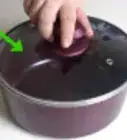This article was co-authored by wikiHow staff writer, Danielle Blinka, MA, MPA. Danielle Blinka is a Writer, Editor, Podcaster, Improv Performer, and Artist currently living in Houston, TX. She also has experience teaching English and writing to others. Danielle holds a Bachelor of Arts in English, Bachelor of Arts in Political Science, Master of Arts in English with a concentration in writing, and Master of Public Administration from Lamar University.
wikiHow marks an article as reader-approved once it receives enough positive feedback. In this case, 100% of readers who voted found the article helpful, earning it our reader-approved status.
This article has been viewed 362,610 times.
Learn more...
A menstrual cup is a soft, silicone device that you can use during your period instead of disposable pads or tampons. You can reuse your menstrual cup, but you need to clean it between uses. After every use, empty your cup and wash it before reinserting it. At least once a cycle, sterilize your menstrual cup to avoid bacterial growth.
Steps
Emptying Your Menstrual Cup
-
1Remove your menstrual cup every 6-12 hours, depending on your flow. Menstrual cups are really convenient because you can wear them for up to 12 hours. However, you may need to empty yours more often on heavy flow days to avoid leaks.[1]
- If you wait too long to empty your cup, you might end up with a messy leak.
- Empty your menstrual cup while you're using the restroom.
-
2Wash and dry your hands before removing your cup. Your hands carry germs and bacteria, so it’s important you wash them before you remove your cup. Use soap and water before you enter the restroom stall, unless it has its own dedicated sink.
- If you’re in a location with no soap and water, wipe your hands clean with an antibacterial wet wipe. It’s best to stick to an unscented option.
Advertisement -
3Squeeze your cup gently to remove it from your vagina. Most menstrual cups are easy to remove after you break the suction seal at the top of the cup. After you pinch the sides, simply pull the cup down and out. Some brands have their own procedure for removal, so check the instructions for your brand.[2]
- For example, some menstrual cups can be pulled out from a narrow stem at the bottom of the cup. Alternatively, you might need to insert your finger over the rim of the cup.
- When you’re removing the cup, be careful that you don’t pinch too hard or tip the cup over, as this can cause it to spill.
-
4Empty your menstrual cup into the toilet or a drain. Simply pour out the fluids. If you’re dumping it into a drain, it’s best to do so while the water is running.[3]
- Aside from your toilet, a sink or your shower are the best places to empty your cup. If you’re in the shower, it’s easy to empty the cup, wash it, and then reinsert it.
Washing the Cup Before Reinsertion
-
1
-
2Wash the menstrual cup with warm water and mild, unscented soap. Rinse the cup under running water, then apply the unscented soap. Thoroughly rinse the cup again until all of the soap is gone.[6]
- It’s important to only use unscented soap, as fragrances can irritate your skin or cause a yeast infection.[7]
- Many menstrual cup brands sell a wash formulated specifically for cleansing your menstrual cup between uses. You might opt for this special wash instead of soap.
- When you’re on the go, it’s helpful to carry a bottle of water to use for washing your menstrual cup.
-
3Use unscented feminine cleansing cloths as an alternative. If you’re in a situation where you can’t discreetly wash and reinsert your menstrual cup, feminine wipes are an option. Purchase a pack of unscented cloths and carry it in your bag. If you have a bottle of water with you, rinse your cup with water after you use the wipes.[8]
- For example, you might not be able to wash your cup in the sink of a public restroom before reinserting it. If this is the case, you could use wipes.
-
4Wipe both sides clean with toilet paper as a last resort. If you’re unable to wash the cup, wipe down both sides and put it back in. Wash it as soon as you’re able to do so.[9]
- Only do this in a pinch, such as when you’re in a public bathroom.
- If the bathroom has clean paper towels, you might use a paper towel instead of toilet paper.
-
5Dry your menstrual cup with a clean towel before reinsertion. You can use toilet paper or a paper towel to dry your cup. Wipe both the inside and the outside of your menstrual cup to remove any excess water.[10]
- Once it’s dry, you can reinsert your cup using the instructions provided with your cup.
Sterilizing Your Cup Between Uses
-
1Soak your menstrual cup in warm water for 2-3 minutes. This will loosen any stuck-on debris, which may collect in the small crevices of your menstrual cup. You can then scrub it away.[11]
- Bacteria can grow on your cup if you don’t clean it properly. Make sure you always soak and scrub your cup at least once a cycle, such as before storing your cup for next month.
-
2Scrub your menstrual cup with a soft toothbrush to remove any debris. Pay special attention to any grooves, indentions, and rims on your menstrual cup. It’s best to scrub the cup under flowing warm water so that any debris washes away.
- Only use this toothbrush for cleaning your menstrual cup.
- You can also buy a cleaning brush made specifically for cleaning your menstrual cup. These are available online.
-
3Cleanse your cup with unscented soap and warm water. Rinse the cup in flowing water, then apply the unscented soap. Rinse the cup well to remove all of the soap.[12]
- You can also use a cleansing wash made specifically for cleaning your menstrual cup.
-
4Submerge your menstrual cup in a pot of water. The entire cup must be covered in water. Make sure your pot is large enough so that the cup doesn’t have to rest against the bottom or sides.
- It’s best to place your cup in a metal steaming basket or an egg whisk to keep it from directly contacting the sides of the pot. Although it’s unlikely, your cup could melt or warp if it sits against the bottom of the hot pot.
-
5Heat the water to boiling over medium-high heat. Once your water starts boiling, set your time. Monitor the water to make sure it doesn’t boil for too long.[13]
- You can also boil your water in the microwave inside a glass container, but it’s much easier to monitor your menstrual cup on the stove. If you decide to use the microwave, start by heating the water for 2 minutes. Then, only heat it for 1-2 minutes at a time until you see bubbles coming up from the bottom.
-
6Set a timer to boil your menstrual cup for 5-10 minutes. Make sure you don’t boil your menstrual cup for longer than recommended. If you boil it too long, the cup could warp or melt.[14]
- Don’t leave the menstrual cup unattended while it’s boiling.
-
7Dry your cup with a clean, dry cloth. Use a paper towel or hand towel to dry your cup. Wipe both the inside and the outside to remove any water.
- As an alternative, you can let your menstrual cup air dry on its side or in a dish rack.
-
8Store your cup in a clean, dry location until its next use. It’s best to keep your cup in a breathable container, such as a cotton pouch. If you prefer to keep your cup in a hard container, make sure the container isn’t airtight.
- Your menstrual cup most likely came with a storage pouch, so use that one for best results.
Things You'll Need
- Menstrual cup
- Pot or glass container for boiling
- Unscented soap or cleansing wash
- Dry towels
- Feminine wipes (optional)
- Water bottle (optional)
- Cloth bag for storage
Warnings
- Do not wash your cup with a soap that has fragrance or is antibacterial. It could irritate the sensitive skin in your vagina or even cause a yeast infection.⧼thumbs_response⧽
- Don’t leave your menstrual cup boiling unattended, as it could get damaged.⧼thumbs_response⧽
- Just like tampons, menstrual cups carry the risk of toxic shock syndrome (TSS). Keeping your menstrual cup clean and sanitary can lower your risk.[16]⧼thumbs_response⧽
- Don’t wash your menstrual cup with harsh cleansers or natural cleansers like vinegar or baking soda. Stick to mild, unscented soaps or specially formulated washes. Otherwise, the silicone can get damaged.[17]⧼thumbs_response⧽
References
- ↑ https://www.teenvogue.com/story/menstrual-cup-questions-answered
- ↑ https://www.teenvogue.com/story/menstrual-cup-questions-answered
- ↑ https://www.teenvogue.com/story/menstrual-cup-questions-answered
- ↑ https://www.teenvogue.com/story/menstrual-cup-questions-answered
- ↑ https://www.consumerreports.org/women-s-health/menstrual-cups-linked-to-toxic-shock-syndrome/
- ↑ https://www.consumerreports.org/women-s-health/menstrual-cups-linked-to-toxic-shock-syndrome/
- ↑ https://www.mayoclinic.org/diseases-conditions/vaginitis/symptoms-causes/syc-20354707
- ↑ https://www.teenvogue.com/story/menstrual-cup-questions-answered
- ↑ https://www.teenvogue.com/story/menstrual-cup-questions-answered
- ↑ https://www.teenvogue.com/story/menstrual-cup-questions-answered
- ↑ http://divacup.com/how-it-works/care-and-cleaning/
- ↑ https://www.teenvogue.com/story/menstrual-cup-questions-answered
- ↑ https://www.consumerreports.org/women-s-health/menstrual-cups-linked-to-toxic-shock-syndrome/
- ↑ https://www.consumerreports.org/women-s-health/menstrual-cups-linked-to-toxic-shock-syndrome/
- ↑ https://www.consumerreports.org/women-s-health/menstrual-cups-linked-to-toxic-shock-syndrome/
- ↑ https://www.consumerreports.org/women-s-health/menstrual-cups-linked-to-toxic-shock-syndrome/
- ↑ http://divacup.com/how-it-works/care-and-cleaning/
About This Article
To clean a menstrual cup, make sure you always scrub and sterilize it at least once a cycle. To scrub and sterilize your cup, start by soaking it in warm water for 2-3 minutes. Then, scrub your cup with a soft toothbrush to remove any debris and clean it with unscented soap and warm water. Next, put your menstrual cup in a pot of water so it's completely submerged and bring the water to a boil over medium-high heat. Finally, boil your cup for 5-10 minutes and then dry it off with a cloth. To learn how to empty and wash your menstrual cup right after using it, keep reading!
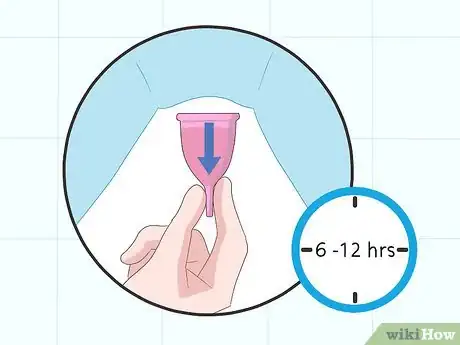
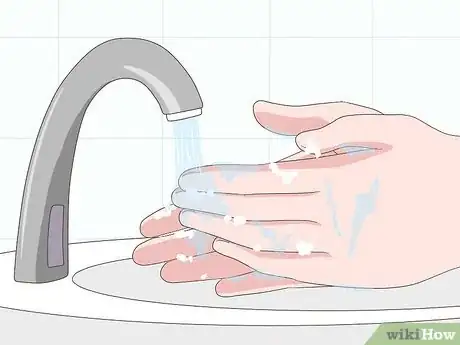
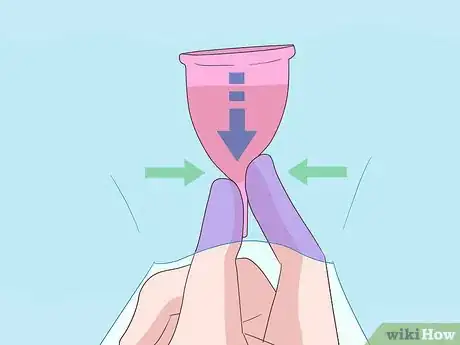
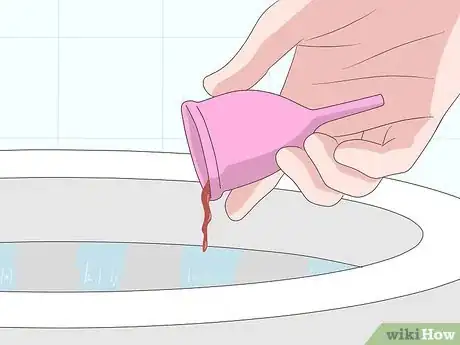
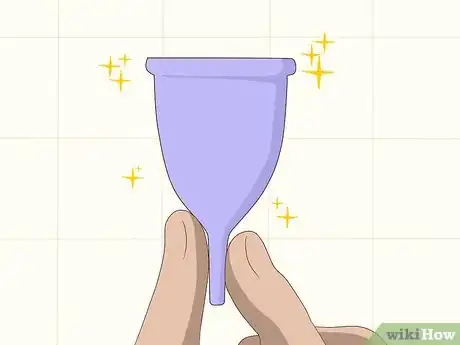
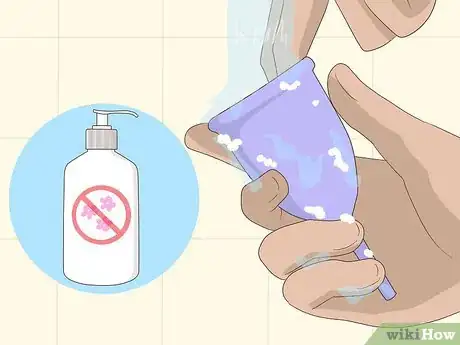
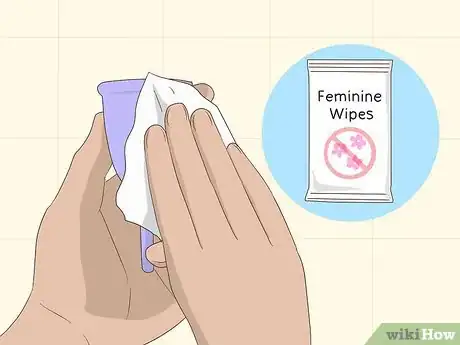
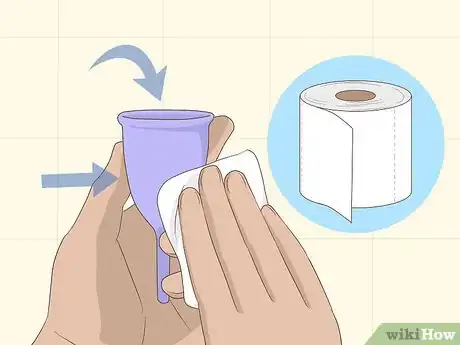
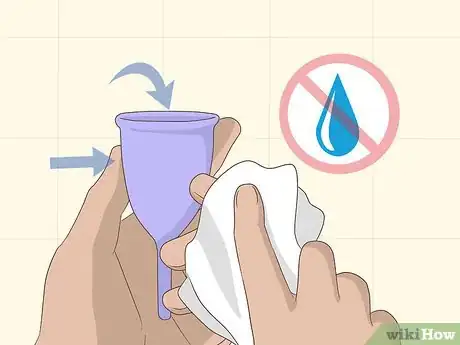
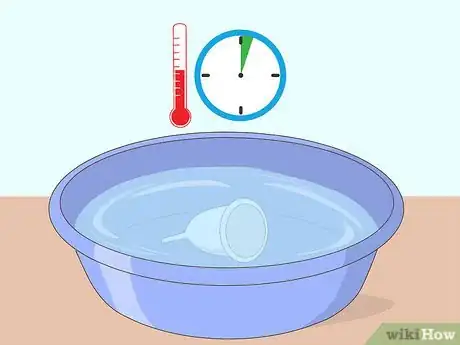
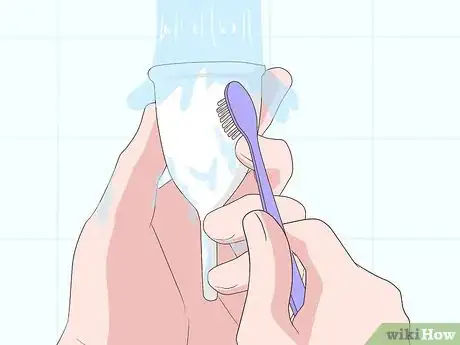
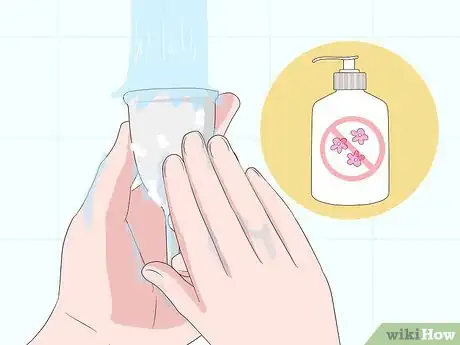
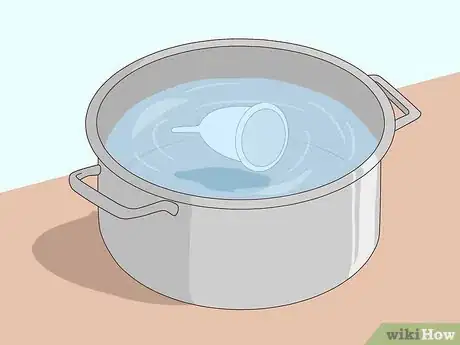
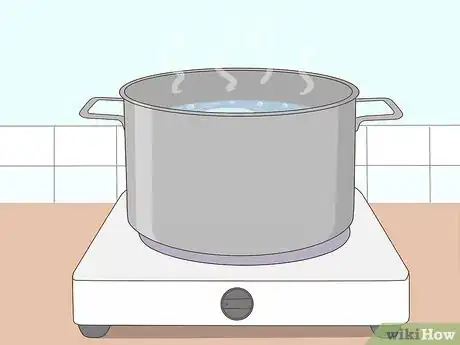
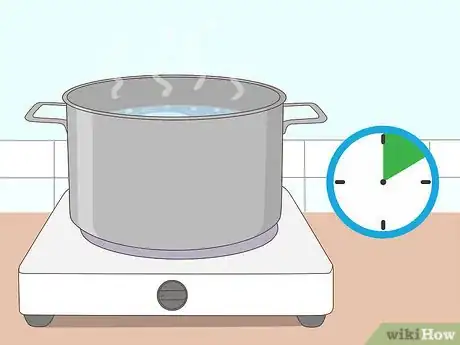
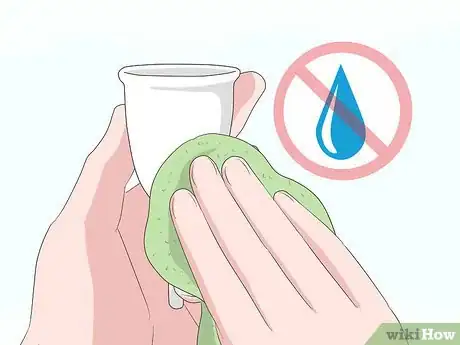
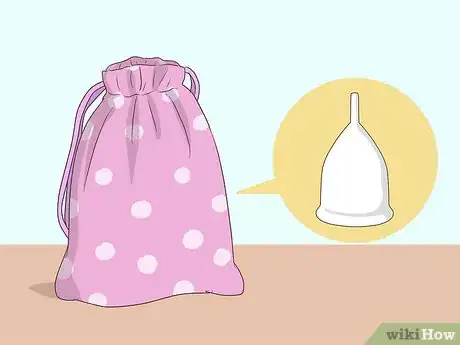





-Step-14.webp)

















